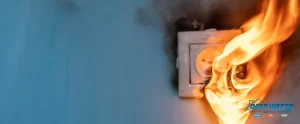One of the most unfortunate things that can happen to your home is water damage, and it can be caused by many things, including flooding, natural disasters, and sewage backups. Regardless of the cause, water damage must be addressed as soon as possible as it can compromise the structural integrity of your home, especially when it affects your walls.
Water-damaged walls pose many dangers, including mold and mildew growth, which is a health risk.
Being able to recognize the signs of water damage in your walls as early as possible plays a vital role in preventing these dangers and further damage.
Health Dangers of Water-Damaged Walls
Water damage is an issue that needs to be taken seriously.
It poses health risks, including:
- Malaria
- Tetanus
- Wound Infections
- Skin Rashes
- Leptospirosis
- Allergies
- Lung Diseases
- Gastrointestinal Illness
- Diarrhea
- Fever
- Vomiting
- Stomach Pain
- Dehydration
Signs of Water-Damaged Walls
Wet and Dark Spots and Discoloration
Having wet or dark spots on the walls means that water damage was done relatively recently. Usually, these spots take at least an hour to a maximum of 24 to appear. White, brown, and yellow discoloration, on the other hand, are signs of long-term water damage inside your walls.
Cracking
Cracking is an obvious sign of water damage in your walls. Excess moisture causes the steel reinforcements of your load-bearing walls to expand and inevitably corrode. These lead to the weakening and cracking of concrete holding them up.
Flaking and Bubbling Paint
Flaking and bubbling paint on the walls indicates water damage as a by-product of cracking. Sometimes, it might be difficult to spot cracking since it starts from within, so try looking for flaking and bubbling instead as they are more readily perceivable.
Water Bill Spikes
If you notice a significant increase in your monthly water bills but don’t have any problems with your faucets, toilets, kitchen sink, or other plumbing fixtures, it could be a sign that there is water damage inside your walls.
Damp and Musty Odors
Have you ever smelled day-old wet newspapers, cardboard, or magazines? They smell damp and musty. These foul smells can also occur in the walls, and they are a clear sign that there’s water damage.
Mold and Mildew Growth
This is an obvious sign that there’s water damage in your walls. Mold and mildew thrive wherever there’s excess moisture, so seeing them spawn on your walls indicates that you need to take immediate action since they proliferate when neglected.
How To Deal With Water-Damaged Walls
When there’s water damage in your walls, the best decision to make is to hire your local water damage mitigation experts. These people know how to fix water-damaged walls and free them from bacteria, mold, and other harmful microbes.
While waiting for them to arrive, here’s how you can temporarily deal with the situation:
1. Shut Off Your Property’s Power Source
If you notice any of the signs previously listed, this is when to start taking necessary action. Since most electrical outlets are on the walls, the first thing you have to do is turn off your property’s power source. By doing this, you prevent cords and appliances from getting in contact with any uncontrolled water. Additionally, shutting off every source of electricity eliminates the electrical hazards of water damage.
2. Locate the Damage
The next thing to do is to locate the damage. Inspect all the areas where signs of water damage are present. Don’t forget to wear protective equipment since water damage brings bacteria, mold, viruses, and other microbes that harbor water and airborne diseases.
3. Assess the Damage From Afar
Once you locate an affected area, try to observe and assess it from afar. It is crucial to keep your distance as getting exposed to water deterioration can lead to serious health hazards. If possible, determine if the damage is still in its early stages.
4. Try To Dry the Area
If the visible signs indicate that degeneration is still in its genesis, wear protective equipment and dry the area. This is only applicable to water damage scenarios caused by leaks from clean water sources. If the cause is sewage backup, all you can do is evacuate.
5. Use Humidifiers To Eliminate Mold Spores
After drying your walls’ affected areas, use humidifiers to eliminate airborne mold spores. These can cause allergies and other respiratory issues, so they must be removed as soon as possible. You can use vinegar or humidifier tablets to kill them effectively.
6. Call the Experts for Cleanup and Mitigation
Lastly, call the experts to provide the necessary course of action. Cleanup is dangerous when done alone without the crucial know-how, so entrust it to those who understand what they’re doing.
By hiring the experts, your walls and property will be restored to their pre-damage condition. For severe cases, don’t attempt to locate or assess the damage – just evacuate. Move to a safe place, and let the experts handle everything.
Who To Call for Water Damage Mitigation for Your Walls?
As mentioned, any water damage in your walls poses many dangers to your property and health. Calling in the mitigation experts is the wisest decision you can make.
Deep Water Emergency Services & Mitigation is here to help. We provide top-notch water damage mitigation services in Dallas, TX, and have extensive experience dealing with water-damaged walls, so we should be your first port of call.
Contact us if you have any inquiries or questions about our services.






